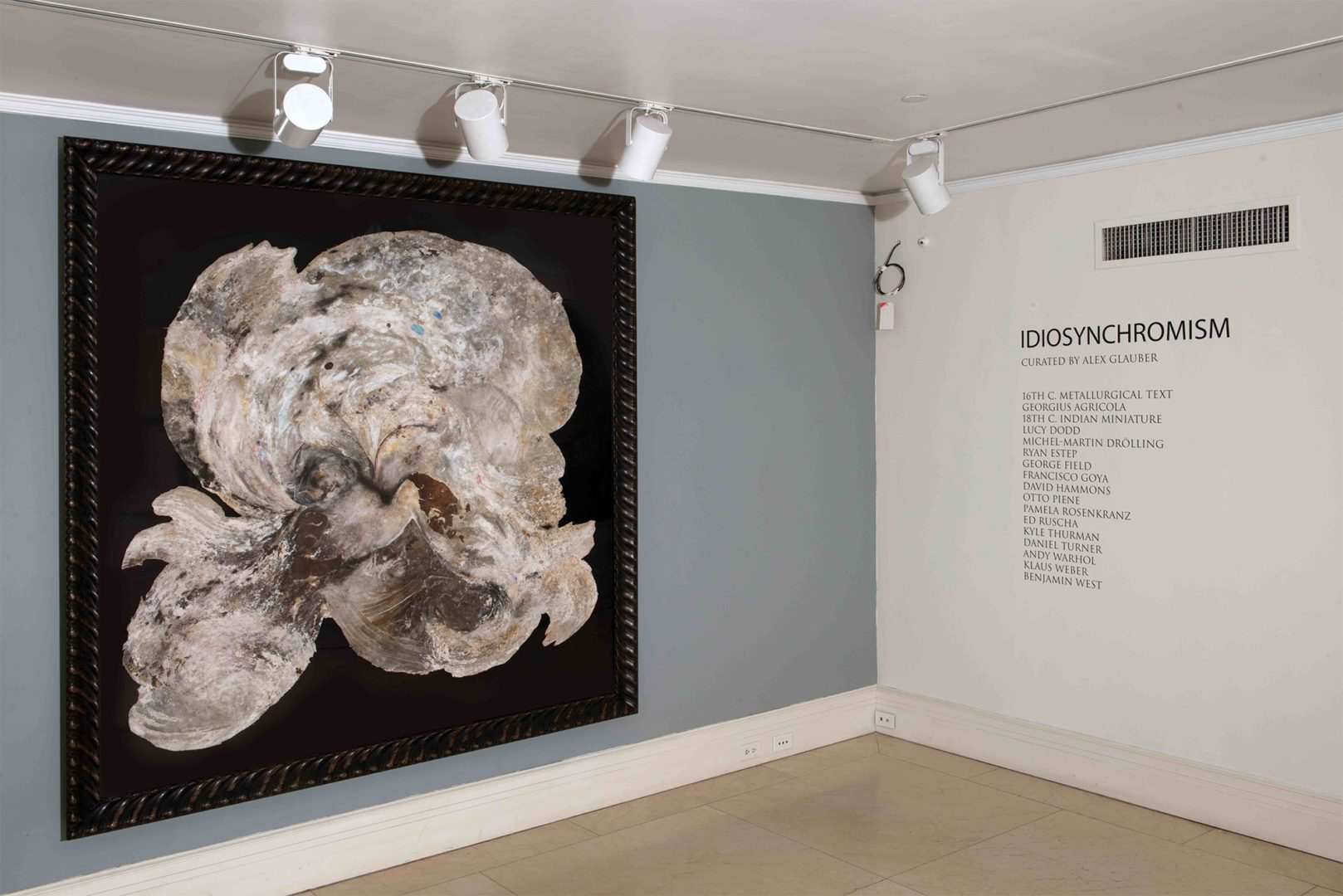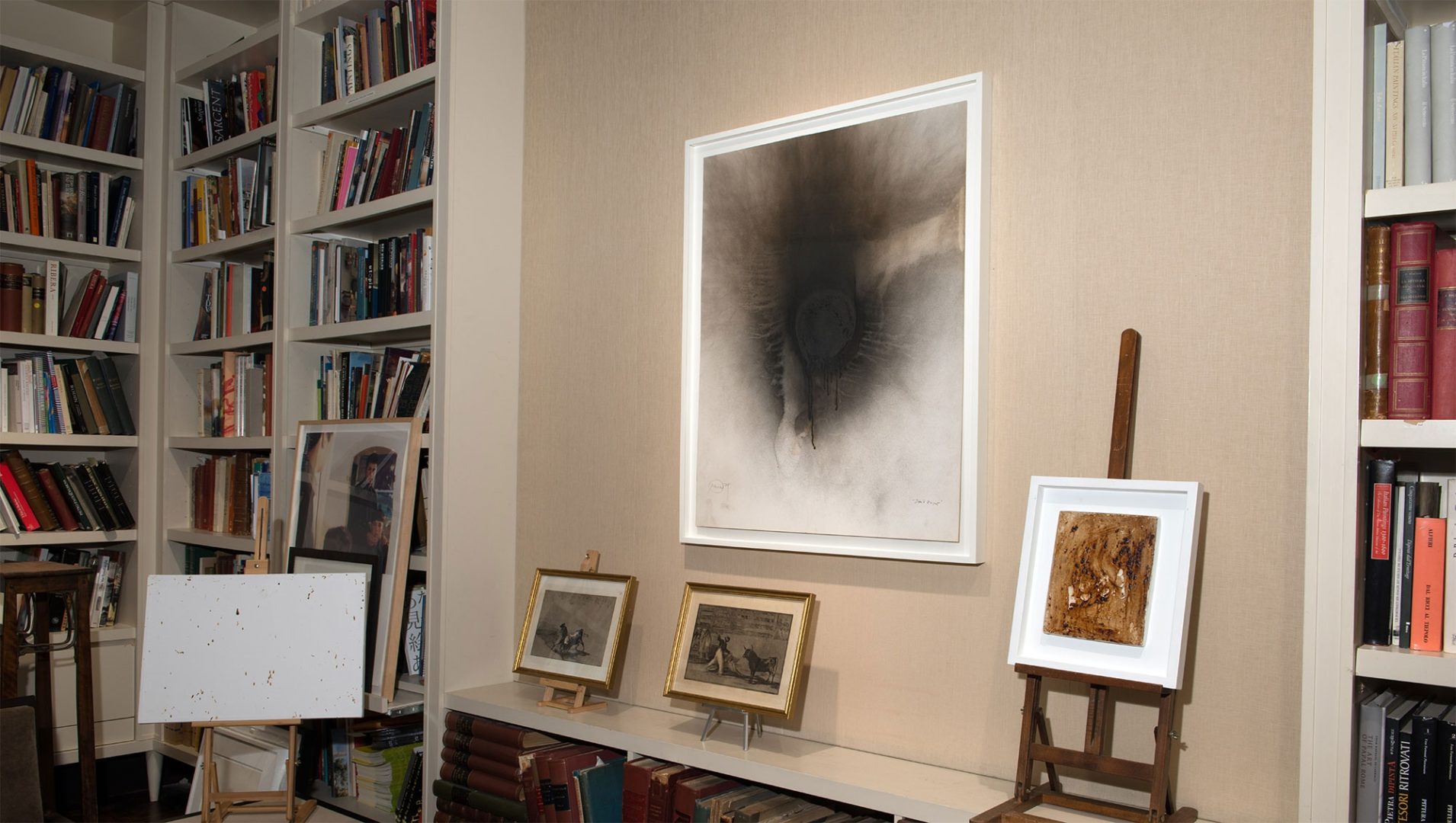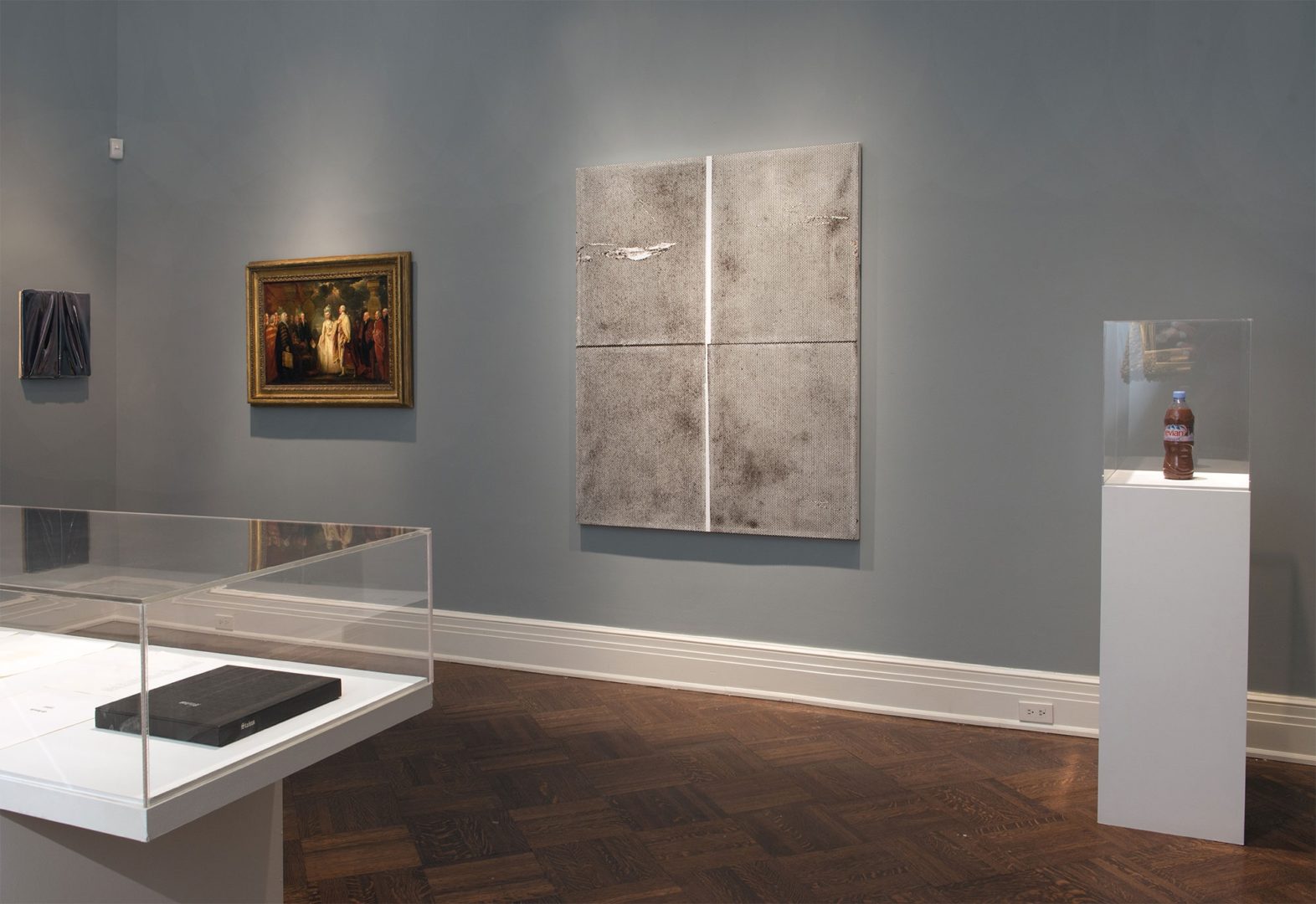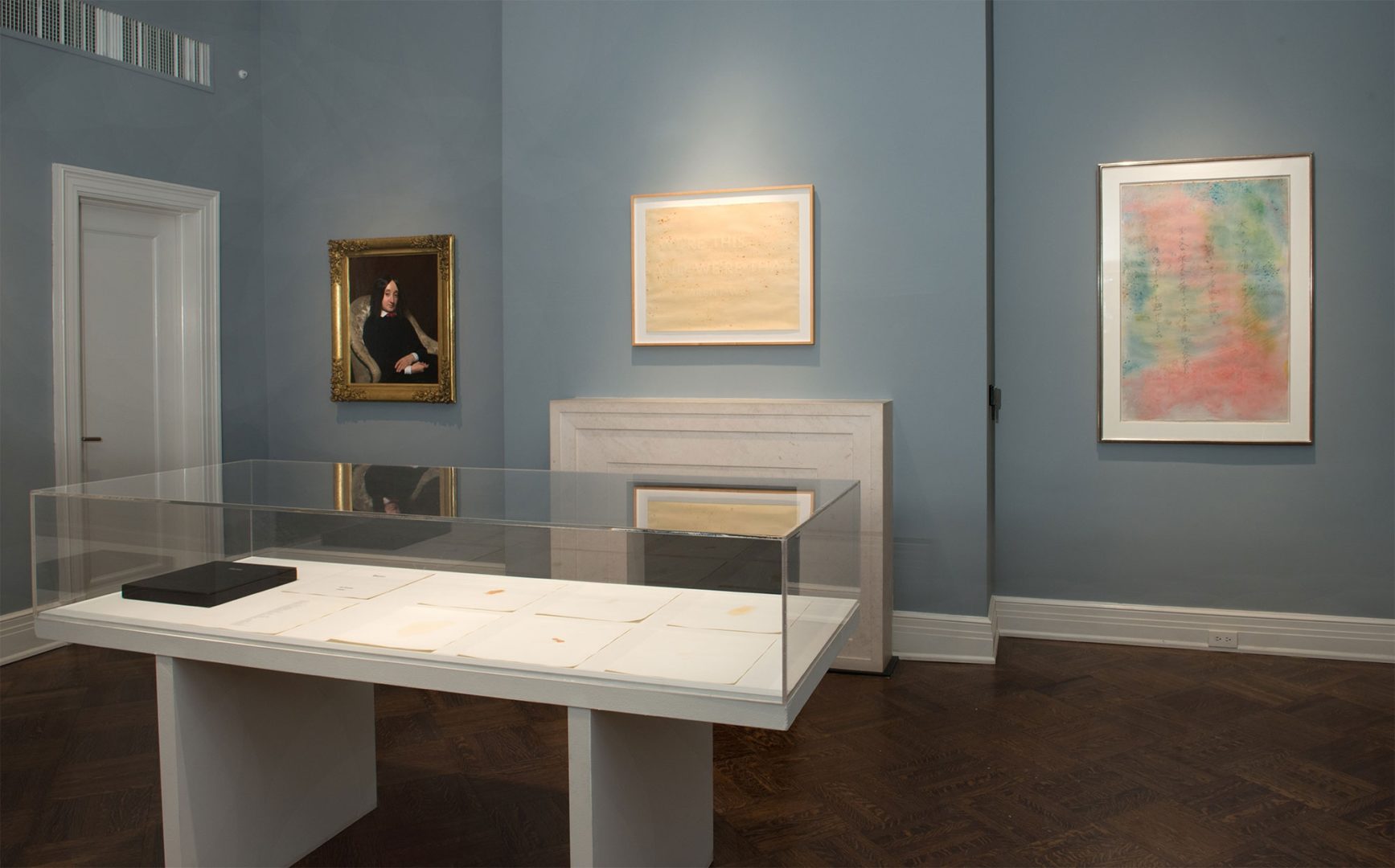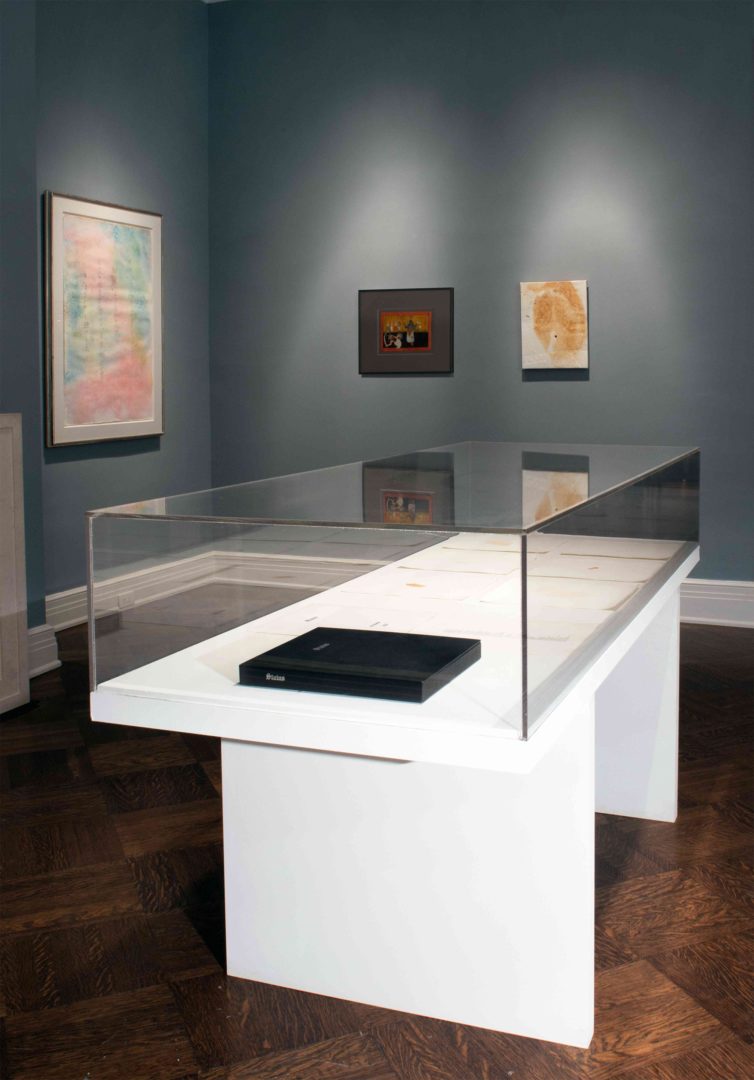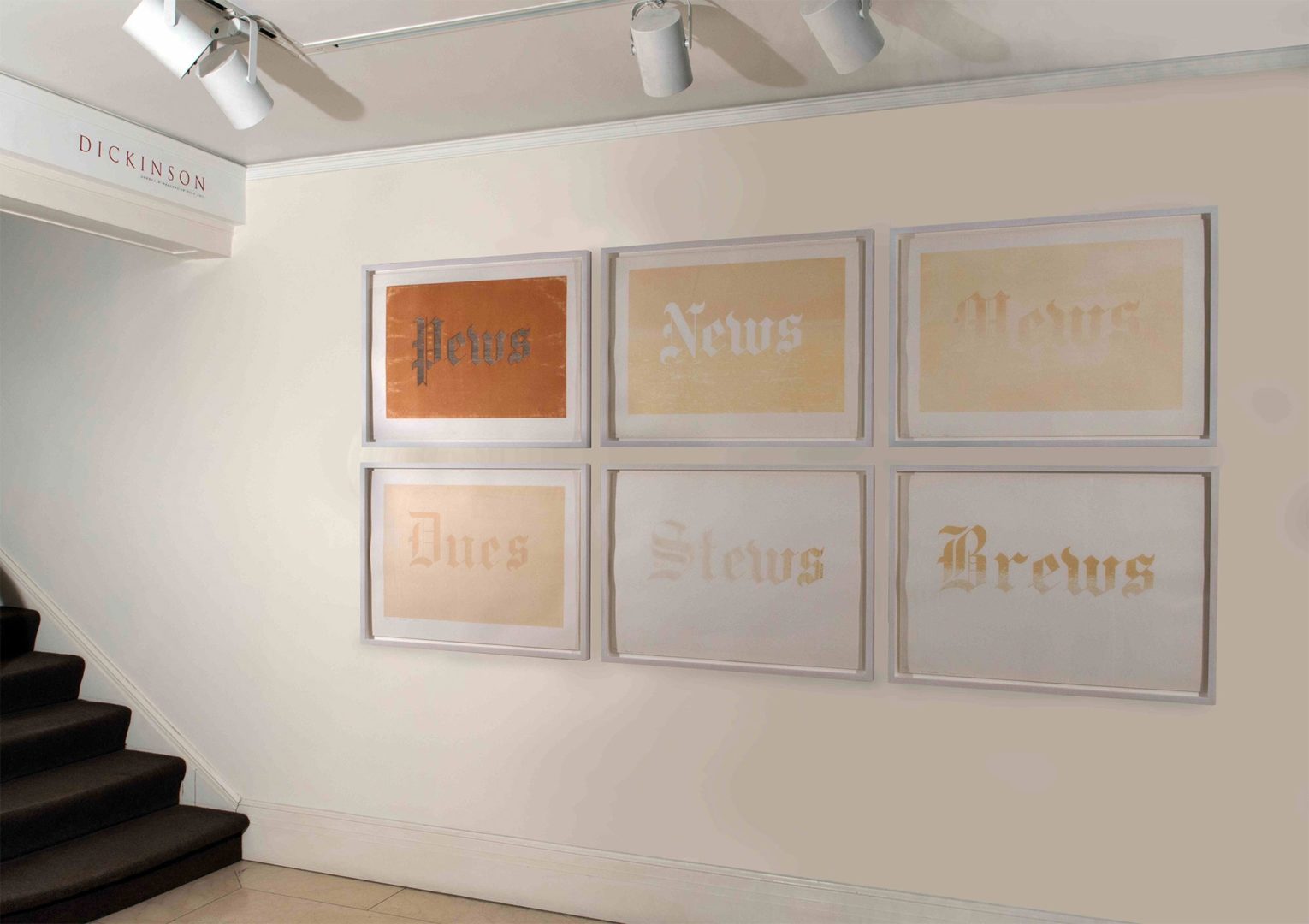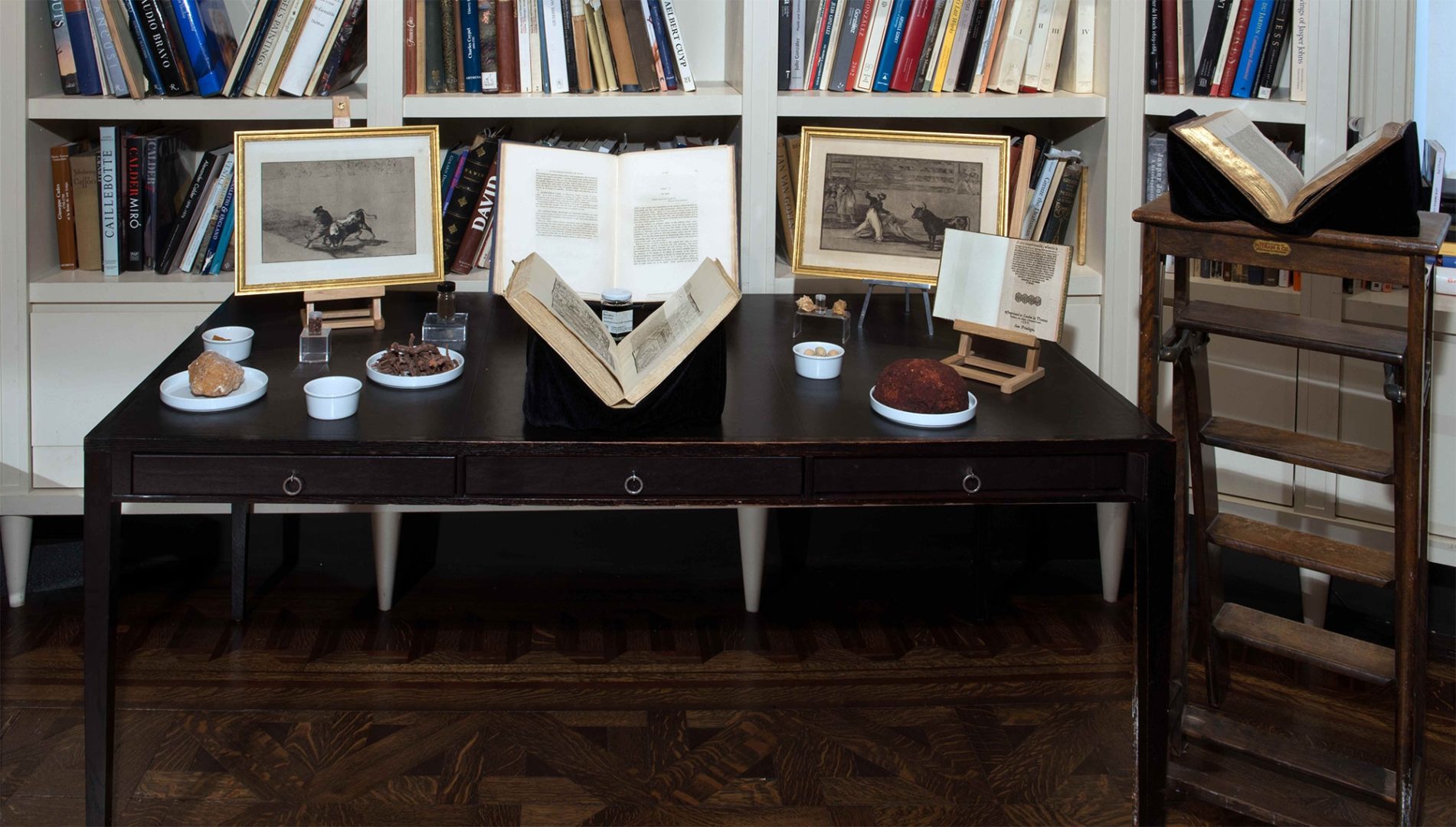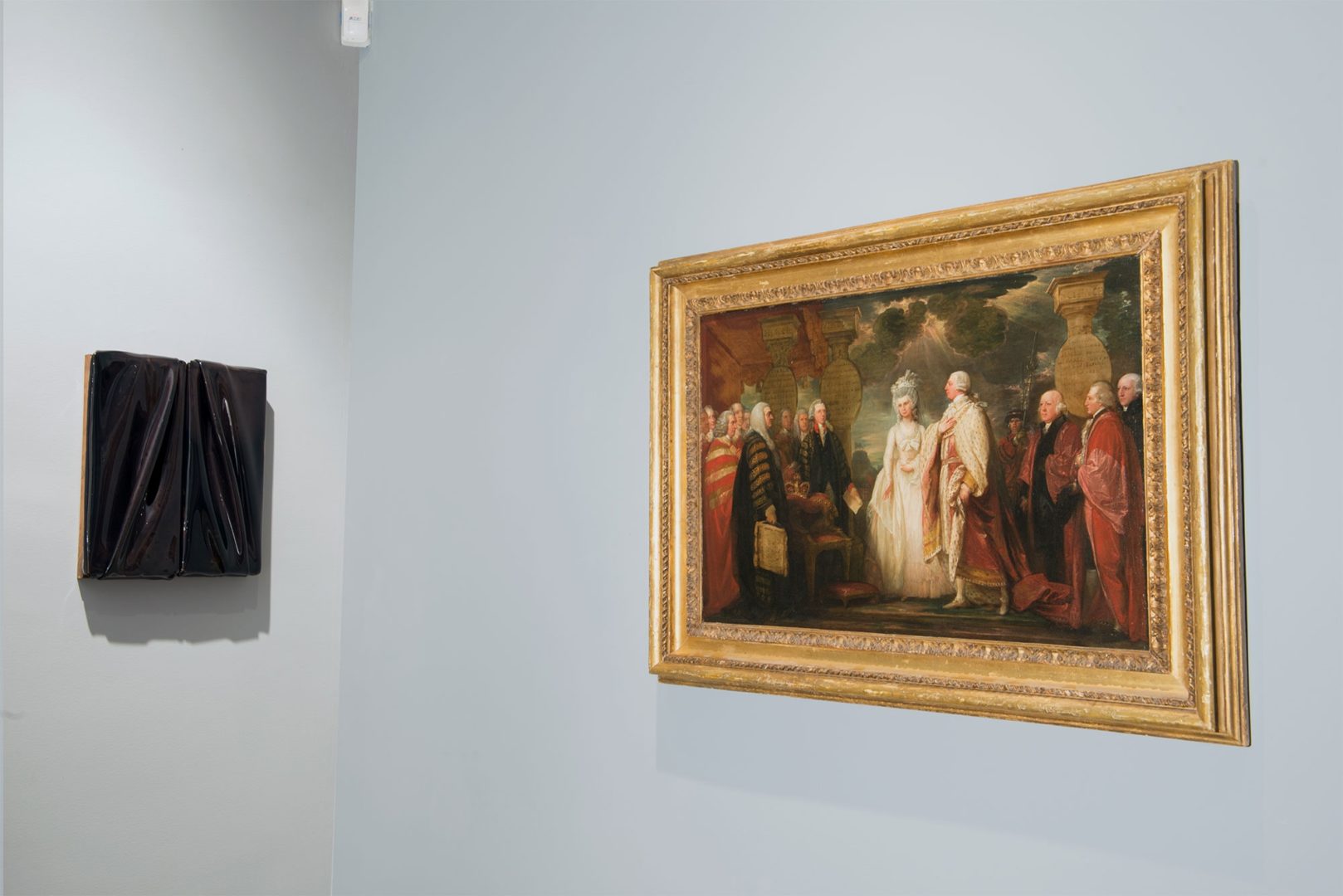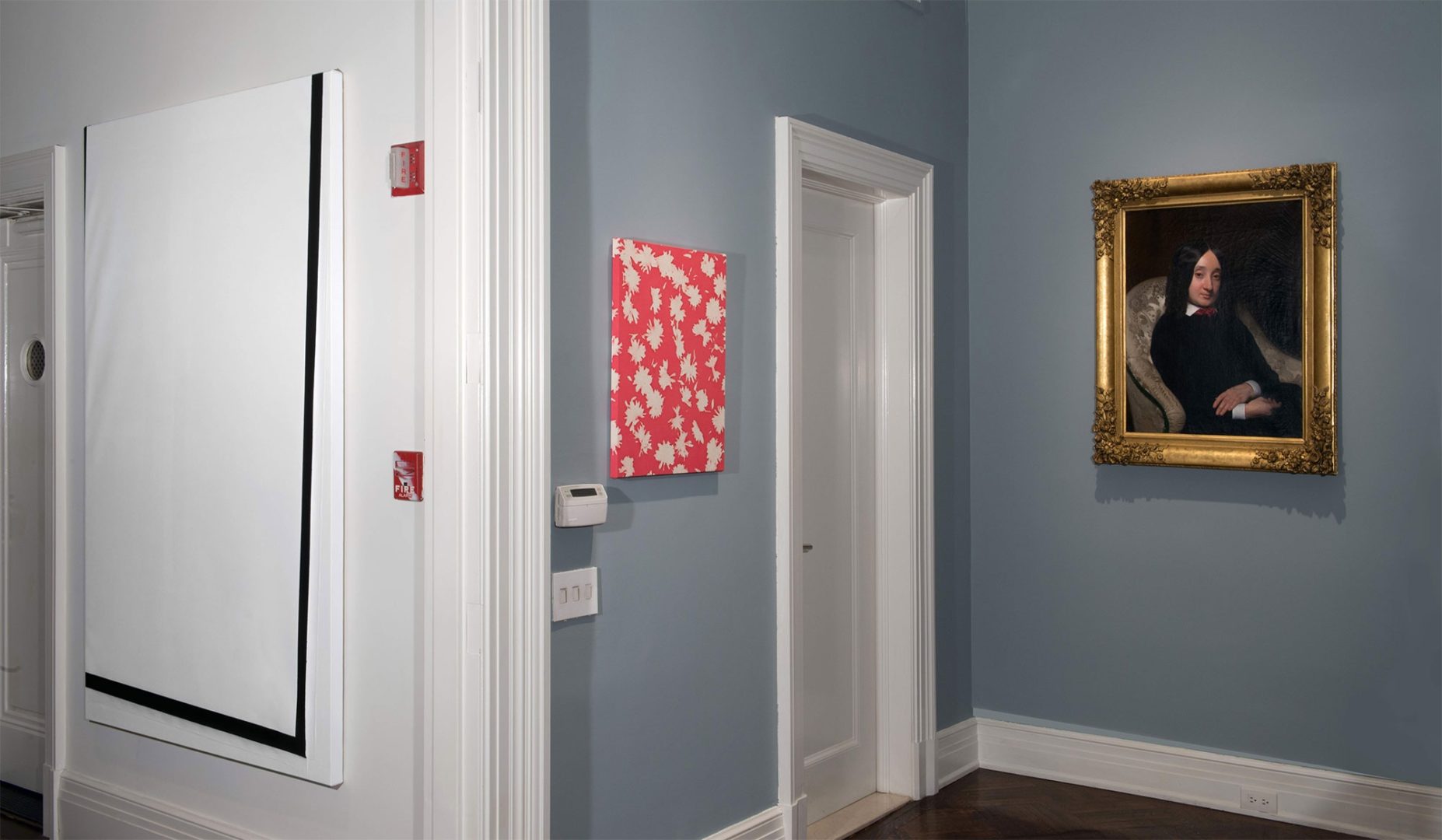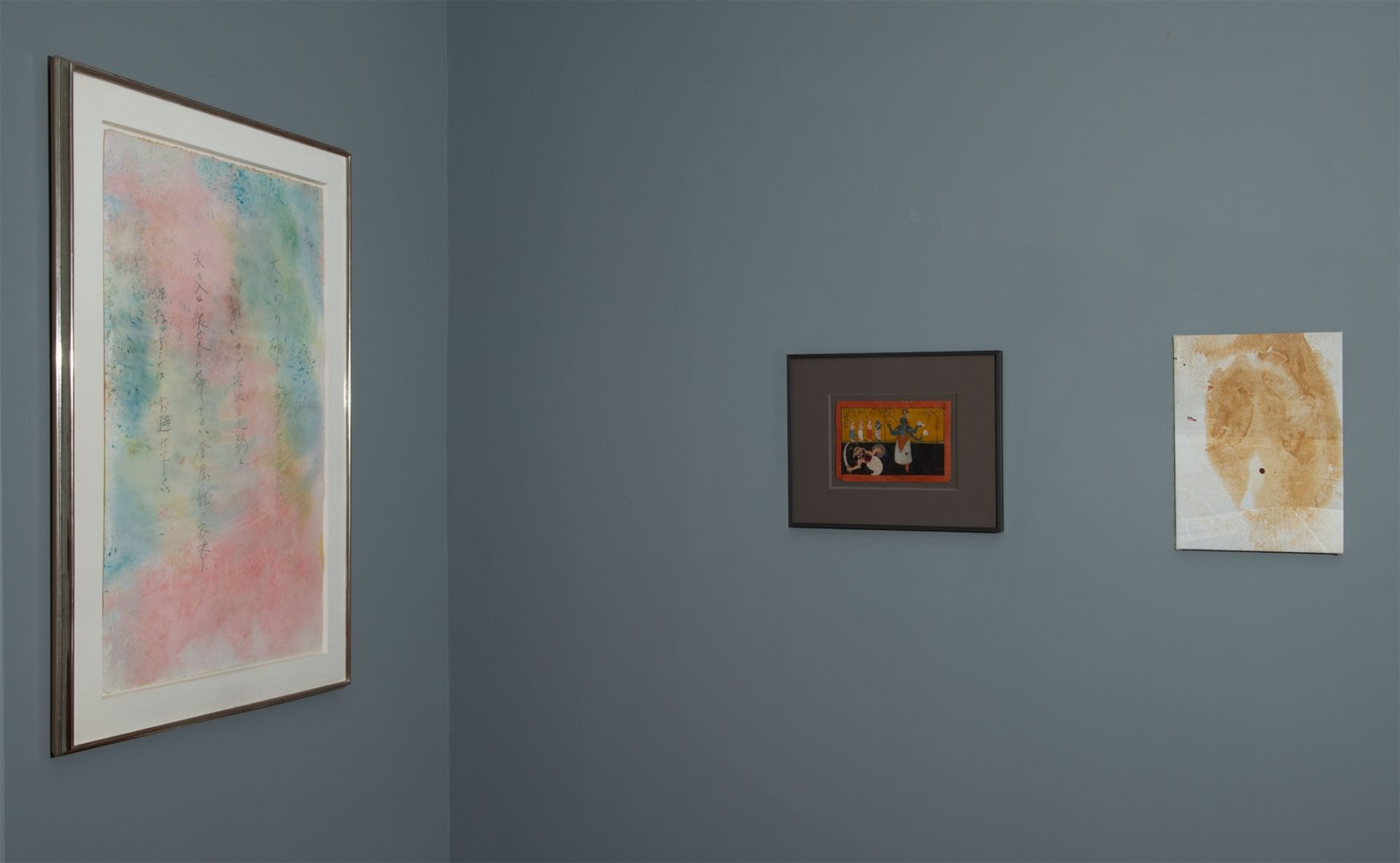Idiosynchromism
March 8th thru April 24th
Curated by Alex Glauber
Dickinson is delighted to present Idiosynchromism, an exhibition that explores the tradition of what many consider to be non-traditional pigments and colorants through examples of material culture and the work of fourteen artists spanning more than three hundred years.
If the Industrial Revolution had not produced an expansive spectrum of colors available premixed and tubed, artists might still rely on the chimerical color recipes found in medieval treatises or 19th century colourmen like George Field who sourced and created pigments for artists. What is easy to take for granted is that the evolution and expansion of the artist’s palette arrived at eccentricity out of technical necessity. One such example was Indian Yellow, a vivid pigment made in Monghyr, north-east Bihar, India from the urine of cows exclusively fed a diet of mango leaves.
Utilized extensively in an early 18th century painting Matsyavatara Incarnation of Vishnu from the Punjab Hills, the pigment gained great popularity in Europe until its production was banned in the early 20th century due to the detrimental effect the process had on the health of the cows which are considered sacred in Hindu religion. Perhaps even more outlandish was Mummy, a brown pigment derived from the ground remains of human mummies bought and at times pillaged from Egyptian burial grounds.
Its wide popularity amongst artists including Benjamin West led to shortages which resulted in rather creative solutions. It is rumored that the French painter Martin Drölling exhumed the bodies of disinherited French kings from the royal abbey of Saint-Denis in Paris to replenish his dwindling stock of the pigment.
As science and time made these eccentric tinctures obsolete due to their expense, instability, fugitiveness, and at times, legality, their use took on a different purpose and meaning–color as readymade. When Ed Ruscha grew increasingly frustrated with applying a “skin of paint on a canvas,” non-traditional materials provided the solution, a literal realism that collapsed the space between signifier and signified. “Color? Hey, I had no choice in the selection of color for the food prints – How do you alter the color of caviar or axle grease?”
With his Stains portfolio from 1969, Ruscha explored his “romance with liquids” across seventy-five sheets stained with everything from Liquid Drano to Chateau Latour from 1962. When abstraction is approached within a conceptual framework, the same pigments that historically served as a means to an end become the end in their own right. When David Hammons uses Kool-Aid as an ersatz watercolor, he does so with full understanding of its metaphorical value and how it functions as a material fraught with racial stereotypes and therefore as a sociological commentary.
At the same time, the artists responsible for the most recent work in Idiosynchromism reveal how material parity unfurls new meaning when considered against historical precedent. Considering the tradition of floral pigments and dyes dating back to the Paleolithic period, Kyle Thurman’s flower paintings speak to the irony born out of the antithetical process by which the flower industry enhances the “natural” beauty of flowers by artificially dyeing them. Thurman’s process deconstructs these augmented blossoms by extracting the organic/chemical color which he then applies to canvas with the leftover petals serving as stencils.
Alternatively, Daniel Turner’s 5150 series made by trapping sappy bitumen between two sheets of vinyl which have been folded with billowing symmetry juxtapose stasis with the perpetual movement of the bitumen and a delicate classicism with the noxious industrial materials that make it. What simultaneously negates and underscores the toxic potency of the bitumen is a surprising etymology. The Persian word for bitumen is mumia which was used to describe the viscous black material that oozed down “Mummy Mountain,” and was thought to be the same material that could be found on the shrouded preserved corpses in Egypt. Alex Glauber is an art advisor and independent curator based in New York City. He also serves as an adjunct faculty member at the Sotheby’s Institute of Art.

